NIL
NCAA settlement could reshape college sports landscape
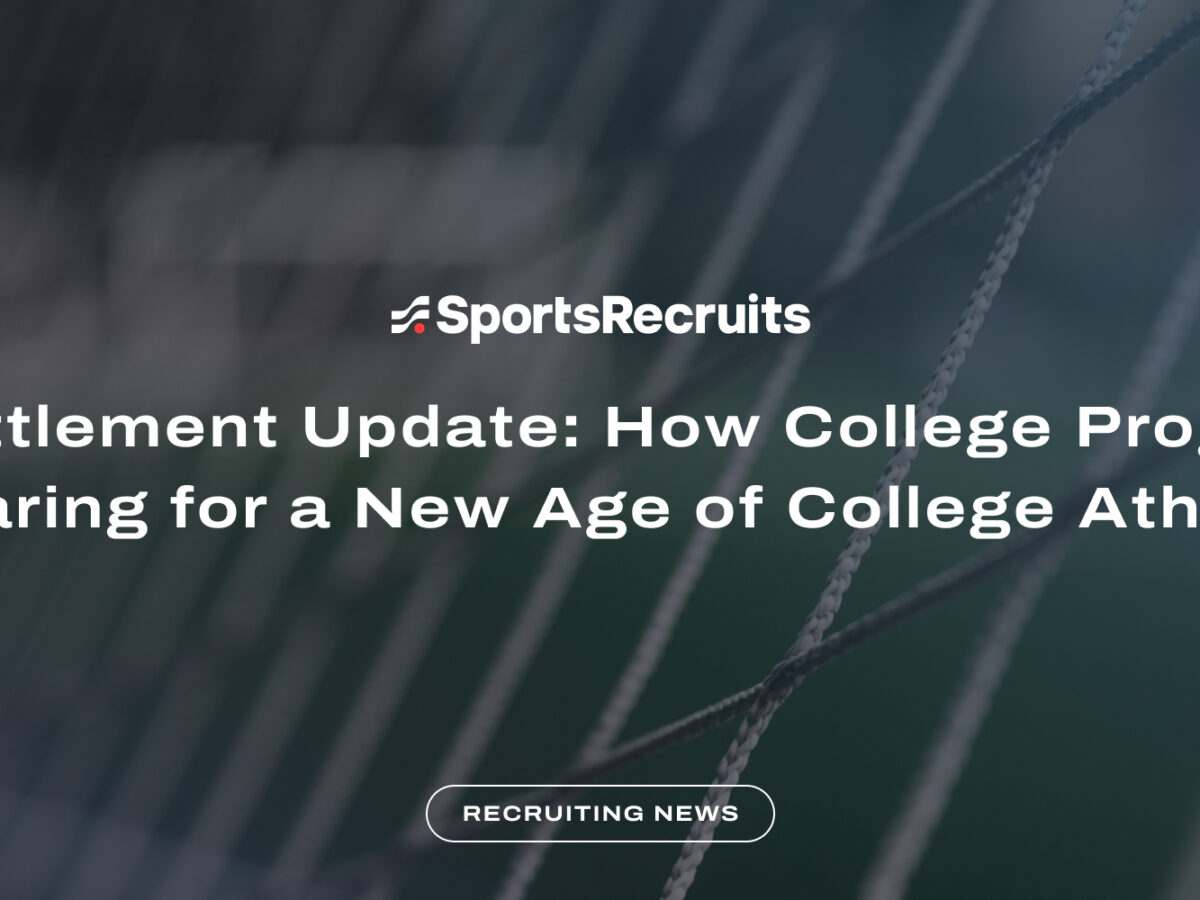
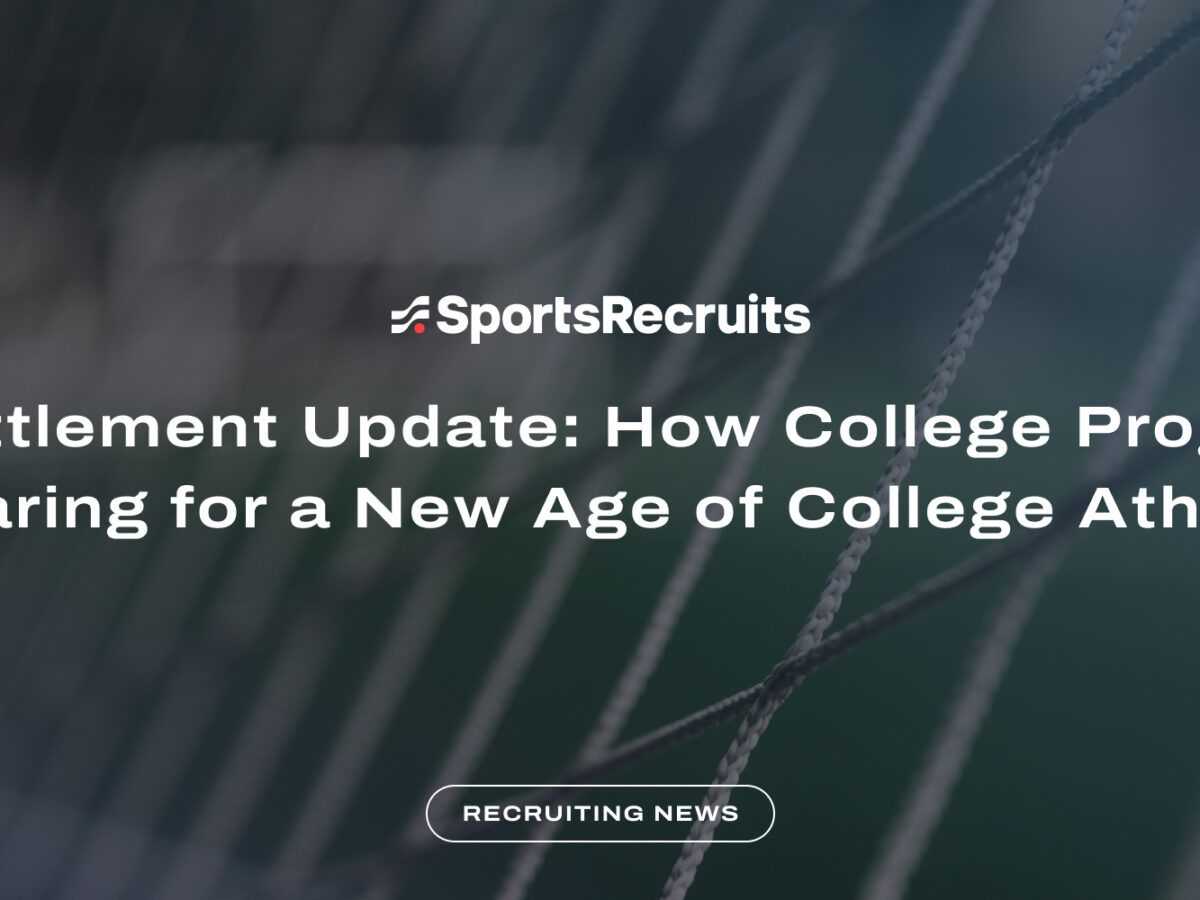

Hoffmann warned of a “huge trickle-down effect” in lower divisions, potentially destroying opportunities for thousands of students to play college sports. “It is truly the death of the ‘student-athlete’ and it could destroy opportunities for thousands of students to play college sports,” he said, emphasizing the far-reaching effects of prioritizing money over education.LAS VEGAS (KSNV) — Major changes could be on the horizon for college sports as the NCAA and several major conferences have agreed to a proposed settlement in a class-action lawsuit. The lawsuit, brought by former players, sought damages for lost name, image, and likeness (NIL) opportunities due to previous NCAA restrictions. As part of the settlement, former student-athletes are set to receive over billion in damages.Attorney Matt Hoffmann from Battle Born Injury Lawyers explained the origins of the lawsuit, stating, “In 2021, the NCAA changed its long-standing rule that forbade student-athletes from receiving compensation for their name, image, and likeness.” This change followed a class-action lawsuit led by former UCLA player Ed O’Bannon, which argued that the NCAA’s restrictions on NIL compensation violated antitrust laws. The case was affirmed by the 9th Circuit in 2016, leading to state laws that prevented the NCAA from disqualifying athletes for receiving NIL money.”The biggest loser in all this are walk-on athletes,” Hoffmann said. The NCAA’s proposal to cap roster sizes means that many walk-on athletes may have to quit or transfer. For example, football programs with average roster sizes of 130 players will now face a hard cap of 105, affecting dozens of athletes per school.The House lawsuit, brought by a former collegiate swimmer and other athletes, argued that those prevented from receiving NIL compensation between 2016 and 2021 should be compensated for lost opportunities.The settlement also opens the door for college programs to engage in revenue-sharing with student-athletes. However, this development comes with new roster limits, which increase the number of athletic scholarships while imposing a hard cap on roster sizes.Hoffmann expressed concerns about the proposed settlement’s impact, saying, “It is a disaster, honestly.” He noted that while the agreement allows colleges to share around million in annual revenue with student-athletes, it poses challenges for smaller programs. Schools are already considering increased ticket prices, concession prices, and athletic fees to participate in the new revenue-sharing model.
NIL
Georgia seeks $390K in NIL contract damages from Missouri football DE
Dec. 5, 2025, 3:22 p.m. CT

Georgia athletics is taking Missouri football defensive end Damon Wilson II to court in a novel, nearly first-of-its-kind case over an NIL contract dispute.
The news was first reported by ESPN’s Dan Wilson on Friday, Dec. 5. The Tribune confirmed the news through a university source and court documents filed in Georgia by the Bulldogs.
UGA is attempting to take Wilson into arbitration and is seeking $390,000 in liquidated damages from the star edge rusher, who transferred to the Tigers in January 2025, over what the university views as an unfulfilled contract in Athens. The lawsuit is not against the University of Missouri, only Wilson.
According to the ESPN report, Georgia is arguing that Wilson signed a contract — a common practice in the NIL era — with what was then UGA’s main NIL and marketing arm, Classic City Collective, in December 2024.
That collective has since shut down, as UGA has partnered with Learfield to negotiate and facilitate NIL deals in the revenue-sharing era.
The report, citing documents attached to UGA’s legal filings, show that Wilson signed a 14-month deal worth $500,000 with the Bulldogs. He was set to earn monthly payments of $30,000 through the end of the contract, as well as two $40,000 bonus payments.
Before announcing his intention to transfer in January, he reportedly was paid $30,000.
The contract states that if Wilson left the team or transferred, which he ended up doing by transferring to Mizzou, then he would owe the collective issuing the payments a lump sum equal to the amount remaining on his deal.
The bonus payments seemingly were not included, which brings that total to the $390,000 that Georgia is now seeking in court.
Wilson, per the report, was only paid a fraction of that sum, but the university is arguing that he owes the full amount in damages. It’s unclear why Georgia is arguing it is owed the full amount in liquidated damages.
The Tribune has reached out to a Georgia athletics spokesperson for comment. At the time of publishing, UGA had not responded to the request for a statement.
According to documents viewed by the Tribune through the Georgia courts records system, UGA filed an “application to compel arbitration” on Oct. 17 in the Clarke County Superior Court, which includes Athens and the University of Georgia. Wilson was served with a summons to appear in court, according to documents, on Nov. 19, three days before the Tigers faced Oklahoma.
A similar case occurred at Arkansas last spring, when quarterback Madden Iamaleava transferred out of Fayetteville after spring camp. It’s unclear whether or not that case has been resolved.
Wilson spent his freshman and sophomore seasons at Georgia. He transferred to Mizzou ahead of spring camp in 2025 and has emerged as one of the top pass rushers in the SEC.
Per Pro Football Focus, Wilson generated 49 pressures on opposing quarterbacks this season, which was the second-most in the SEC behind only Colin Simmons at Texas. He’s listed at 6 foot 4, 250 pounds and could declare for the 2026 NFL Draft, where he would likely be a Day 1 or 2 pick.

The lawsuit raises a contentious point.
By suing Wilson for allegedly not fulfilling the terms of his contract, the school could be treading close to arguing that Wilson was paid to play. That’s not how NIL deals currently work. The deals and their payments are typically for an athletes’ likeness for brand deals and marketing. Think of it as advertising money, not salaries.
There’s a reason that’s the case. By paying players for play, there’s an argument that they are university employees. University and athletic department leaders are widely against making that distinction, because it would disrupt the amateurism model in place for college athletics.
Wilson’s contract likely includes “liquidated damages” language, which are intended to stop players from transferring.
Missouri currently has multiple players on two-year contracts. Part of that is in the hope that they do not move on after one season.
If Georgia’s arbitration case against Wilson is successful, that would be a groundbreaking ruling in college athletics that could give more weight to liquidated damages clauses in athlete contracts.
NIL
Fired $15.8 million college football coach blames QB’s performance for his dismissal
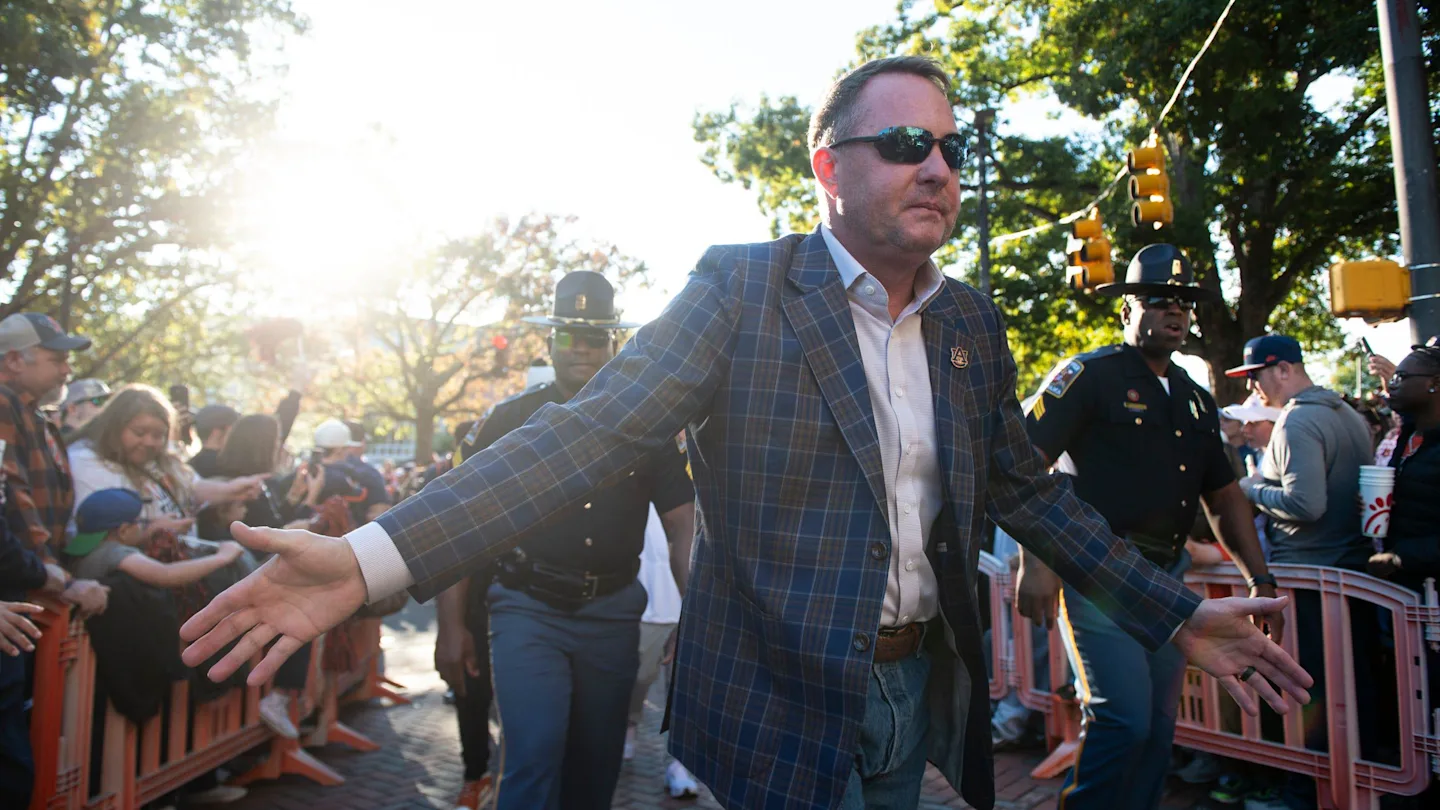
Fired Auburn football coach Hugh Freeze isn’t going out quietly.
Freeze was outspoken in the weeks before his dismissal, saying he and his staff were still the right fit to lead Auburn into the future, despite going 15-19 over two-plus losing seasons. Auburn athletic director John Cohen disagreed, firing Freeze on Nov. 2, taking on his $15.8 million buyout, and hiring South Florida head coach Alex Golesh last week.
Despite that nice payday on his way out, Freeze is still venting about his dismissal and blames quarterback Jackson Arnold for why he’s no longer Auburn’s head coach.
During an interview this week with AuburnSports’ Justin Hokanson, Freeze said, “Certainly, it didn’t work out to the level that he or I both expected for him and our team. And that’s why I’m sitting here.”
Freeze recruited Arnold out of the transfer portal from Oklahoma, where he passed for 1,421 yards, 12 touchdowns and three interceptions and rushed for 444 yards and three TDs as the Sooners’ starter in 2024. It seemed to be a mutual parting of the ways between Arnold and Oklahoma, which brought in the highly coveted Washington State transfer, John Mateer, at quarterback.
Arnold, who was a five-star prospect and the No. 4-ranked QB recruit in the 2023 class by 247Sports, looked for a fresh start as a junior at Auburn, but it was more of the same for him this fall as he passed for just 1,309 yards, 6 TDs and 2 INTs with 311 rushing yards and 8 TDs before being benched Oct. 25 vs. Arkansas after throwing an interception that was returned 89 yards for a touchdown.
Ashton Daniels, a senior and transfer from Stanford, took over and led Auburn back from an 11-point halftime deficit to a 33-24 win over the Razorbacks and finished the season as the starter.
Freeze tempered his comments on Arnold a bit, saying, “Let’s be clear, this is not a beat-up Jackson deal. It’s never always the quarterback. There are other factors. I mean, he missed a touchdown throw here at Oklahoma to a wide-open Cam Coleman.
“Those plays you’ve got to make to win games. And he would say that too. And there’s also the Missouri game, where we have what, eight drops? Then there’s moments in the Georgia second half where he misses open guys, or the protection is not great, so it’s a combination of all those things.”
Maybe it’s also partly the coaching. Freeze was given a six-year, $49-million contract at Auburn after having previous success at Ole Miss (on the field, at least) and Liberty, but he went 6-7 and 5-7 in his first two seasons before starting 4-5 this year and getting fired. He was 6-16 in SEC play during his tenure.
NIL
Michigan State Just Entered The College Football Arms Race With A Bang
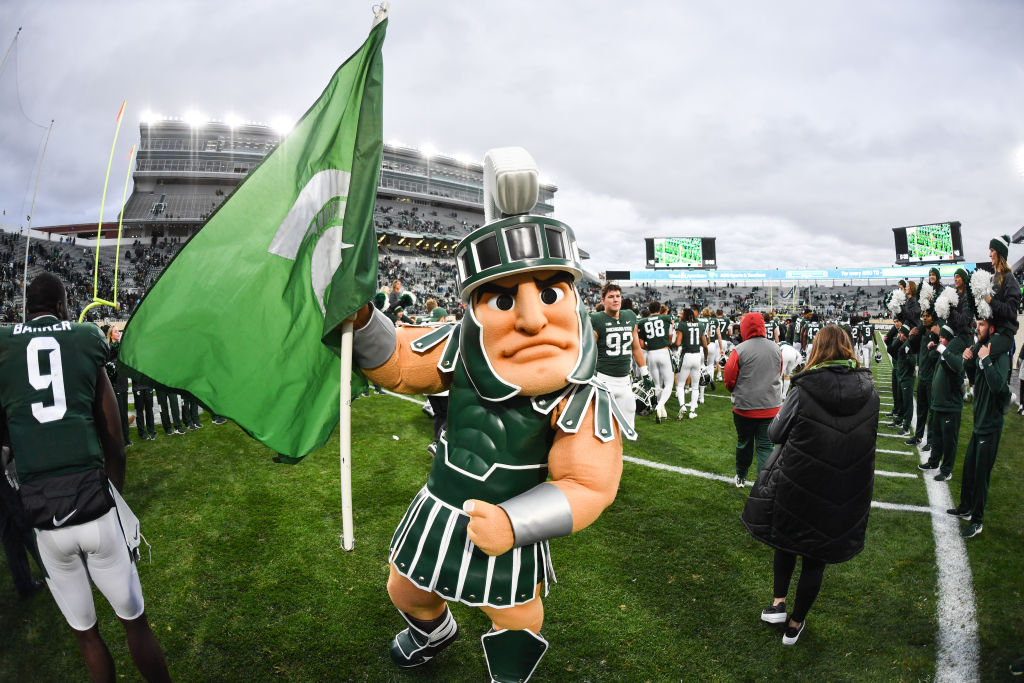
That’s going to buy one hell of a roster in East Lansing!
The arms race in college football continues to heat up.
With the relatively new advent of paying players now considered above board, athletic departments are falling all over themselves to secure funding to help maintain a competitive roster in a Power 4 conference.
You’ve been seeing more and more “non-traditional powers” throwing their hats in the ring to try and fund their way to national relevance, most famously out in Lubbock, where the Texas Tech Red Raiders are on the precipice of a Big 12 championship and a College Football Playoff berth.
Our latest participant in the college football arms race hails from East Lansing, Michigan.
The Spartans of Michigan State are trying their damnedest to get back to where they were in the early to mid 2010s, when head coach Mark Dantonio had the team competing for the Big Ten title year in and year out.
And one of the school’s mega boosters may have just dropped the biggest bomb in the war yet.
Yes, you read that right, some generous fellow donated more than $400 MILLION to the athletic department at Michigan State.
Greg Williams, a Michigan State booster and CEO of Acrisure, along with his wife, Dawn, gifted their hundreds of millions earlier on Friday through the university’s “Uncommon Will, Far Better World” campaign.
Now, to be sure, not all of this money will be going to the football program.
It’s earmarked for the athletic department at MSU, which involves all of their sports programs as well as facilities upgrades. But make no mistake about it, you can rest assured the bulk of this money will go towards funding the NIL apparatus for the Spartans’ football team.
Seeing how the football program at any Power 4 institution is more than likely the clear breadwinner, this would make sense.
Naturally, there were plenty of nerds on X who took exception to this donation and its intended purpose.
Cry me a river!
Trust me, if the football team at a Big Ten or SEC school is rolling, everyone at the university eats.
Just look at how much Alabama has grown since its football program took off after Nick Saban’s arrival.
In the meantime, if you start seeing Michigan State randomly signing top-five recruiting classes and bringing in a bunch of five-stars in the transfer portal, you’ll know why.
NIL
How historic $401 million donation to Michigan State helps Tom Izzo, Pat Fitzgerald
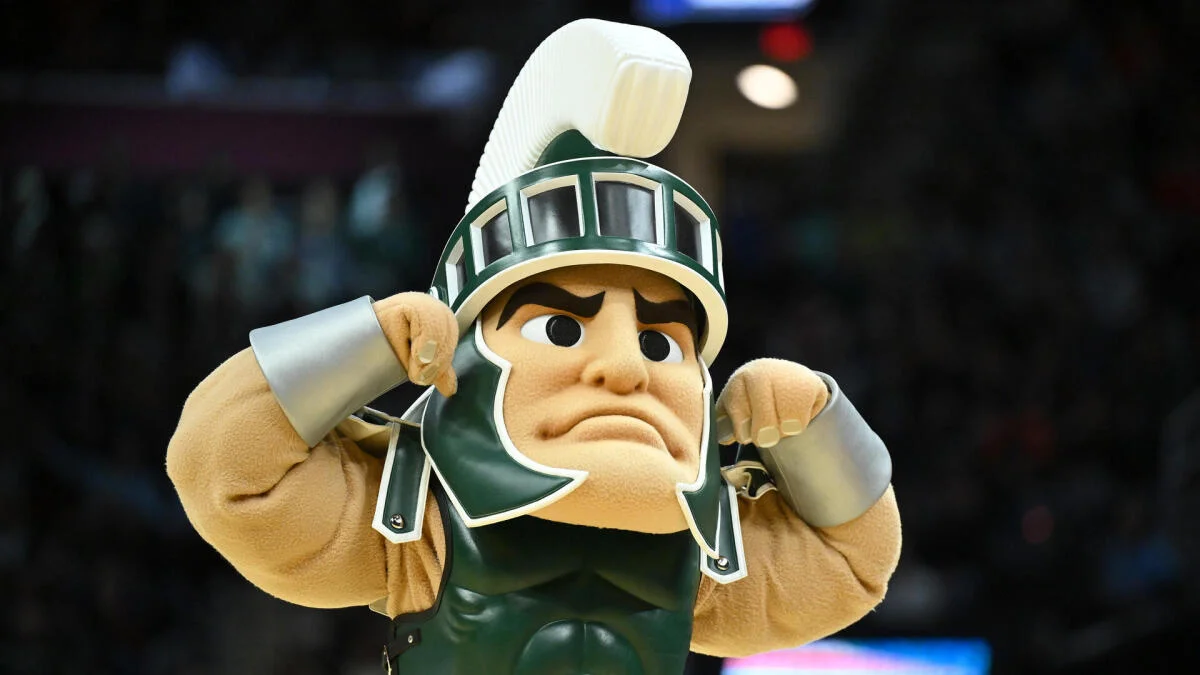
Michigan State is the latest school to receive a massive donation to its athletic department. Acrisure co-founder Greg Williams and his wife, Dawn, made a $401 million commitment with $290 million of that sum designated for MSU Athletics, the university announced Friday. It is the largest gift in school history and sets the Spartans up to be competitive in the revenue-sharing era of college sports.
The donation pushes Michigan State closer to the $1 billion goal associated with its athletics fundraising campaign. In an age where athletes can earn money directly from their school, financial support is as important as ever.
The cash influx also comes at a pivotal time for Michigan State, which just completed a football coaching change and seeks to reestablish itself as a Big Ten contender under Pat Fitzgerald. And while Tom Izzo said this spring that he has no plans to step away from the basketball court in the near future, the donation could help his eventual successor usher in a more modern recruiting approach.
Michigan State hires Pat Fitzgerald: Spartans act quickly for next coach after firing Jonathan Smith
Will Backus

“In today’s evolving college athletics landscape, this is a monumental day in the history of Michigan State Athletics,” Michigan State athletic director J Batt said. “Greg and Dawn’s commitment will provide the resources required for new levels of competitive excellence and student-athlete opportunities. We’re eternally grateful for their incredible generosity, dynamic leadership and trust.”
With the increased importance of athletic investment in the revenue-sharing era has come with a wave of historically large donations at numerous prominent universities. Kansas received a $300 million gift in August to fund its football stadium project and athletic programs, and Illinois secured a $100 million donation in September. Both are believed to be among the largest gifts ever given to college athletic departments.
A running start on roster construction for Pat Fitzgerald?
Michigan State’s football recruiting efforts took a dive during the two-year Jonathan Smith era but could rebound as a result of the coaching change and financial commitment. If the Spartans become more prominent players in the NIL and revenue-sharing world, Fitzgerald could attract more blue-chip talent to East Lansing than his predecessor, who never signed a class better than No. 42 in the 247Sports team recruiting rankings.
The Spartans this year posted their fourth consecutive losing record, marking the program’s worst stretch since 1979-83. The Big Ten is more competitive at the top now in the wake of conference expansion, and if Fitzgerald is to launch Michigan State into the league’s most elite tier, it will take work to climb out of the hole the Spartans dug to start the decade. Investment into the program should help in that regard.
Basketball program set for success in eventual post-Izzo era
Izzo, now 70 and in his 30th season on the job, is unabashedly committed to his principles, and while he says he is not opposed to change, his stances on the transfer portal and NIL are more conservative than some of his counterparts across college basketball. The more traditional approach works for Izzo, who won the Big Ten last year and appears this season to be poised for another run at the conference title and perhaps a Final Four.
Not everyone can win the way Izzo does, though. The Spartans have taken just seven transfers since 2019 and no more than three in a single cycle. Whenever he retires — and that day may not come for some time — his eventual successor will likely have to adopt a more modern recruiting strategy. That requires money, and lots of it. NIL and revenue-sharing budgets this season exceeded $10 million in the most extreme cases.
The Williams’ donation ensures that Michigan State basketball can spend with the richest programs in the country — if it wants to. That is a major win for Izzo’s successor, and perhaps Izzo will continue to adapt to the modern landscape and put the money to good use himself.
NIL
Georgia seeks over $300,000 in damages from Damon Wilson after transfer to Missouri
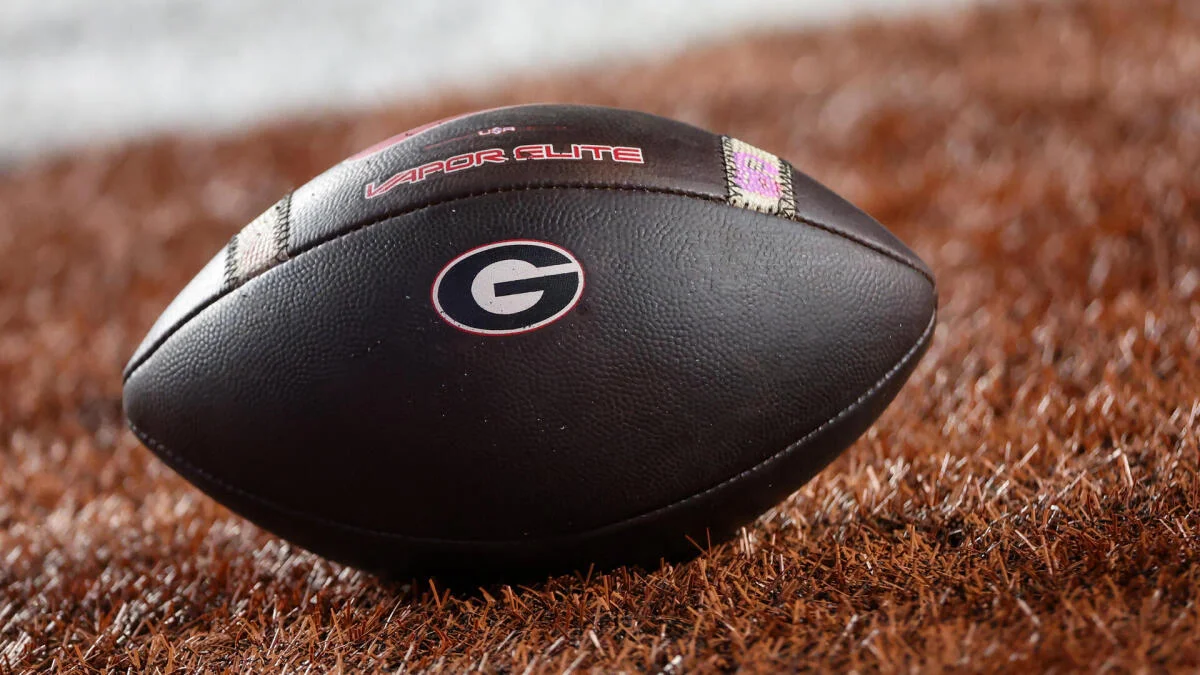
The Georgia athletic department seeks $390,000 in damages from former Bulldogs outside linebacker Damon Wilson II after his transfer last offseason to Missouri. Citing a clause in Wilson’s NIL contract, Georgia asked a judge to force Wilson to enter arbitration to settle the dispute. Legal documents show that Wilson was served a court summons last week in Missouri.
If the judge sides with Georgia, this could be a landmark case in college athletics. Georgia and other schools include clauses in their NIL contracts that equate to buyouts, and a ruling in the Bulldogs’ favor would set the precedent that such clauses are legally enforceable. Player buyouts could, in turn, become even more commonplace as schools seek to protect themselves financially from the perils of the transfer portal.
Wilson, a former top-50 recruit, spent the first two years of his college career at Georgia and developed into one of the most promising young edge rushers in the SEC. He inked a new deal with Georgia’s NIL collective in December 2024 but entered the transfer portal and moved to Missouri weeks later in January 2025.
While Georgia paid Wilson $30,000 under the terms of the new deal before his departure, the athletic department says Wilson owed a $390,000 lump sum within 30 days of his exit.
The contract was a 14-month agreement worth $500,000, which was set to be paid in monthly $30,000 increments. Georgia would have also paid Wilson two $40,000 retention bonuses at the end of the NCAA transfer portal windows. The exit clause states that Wilson would owe a lump-sum payment worth the total he would have received if he remained with the program through the duration of the contract.
The NIL collective signed the rights to the damages over to the athletic department on July 1.
“When the University of Georgia Athletic Association enters binding agreements with student-athletes, we honor our commitments and expect student-athletes to do the same,” Georgia spokesperson Steven Drummond said to ESPN.
Wilson was the No. 3 overall prospect and top-ranked edge rusher in the 2025 transfer portal cycle, per 247Sports. He delivered on expectations at Missouri this season with a team-high nine sacks and an interception.
This is among the first instances of a school publicly seeking NIL damages from a former player over a breach of contract. Arkansas’ NIL collective hired an attorney in April to pursue and enforce a buyout clause in former Razorbacks quarterback Madden Iamaleava’s agreement in what was, at the time, an unprecedented move. The Arkansas Edge collective also sought buyout money from former receiver Dazmin James.
NIL
Georgia seeks $390K from DE Damon Wilson for transfer damages
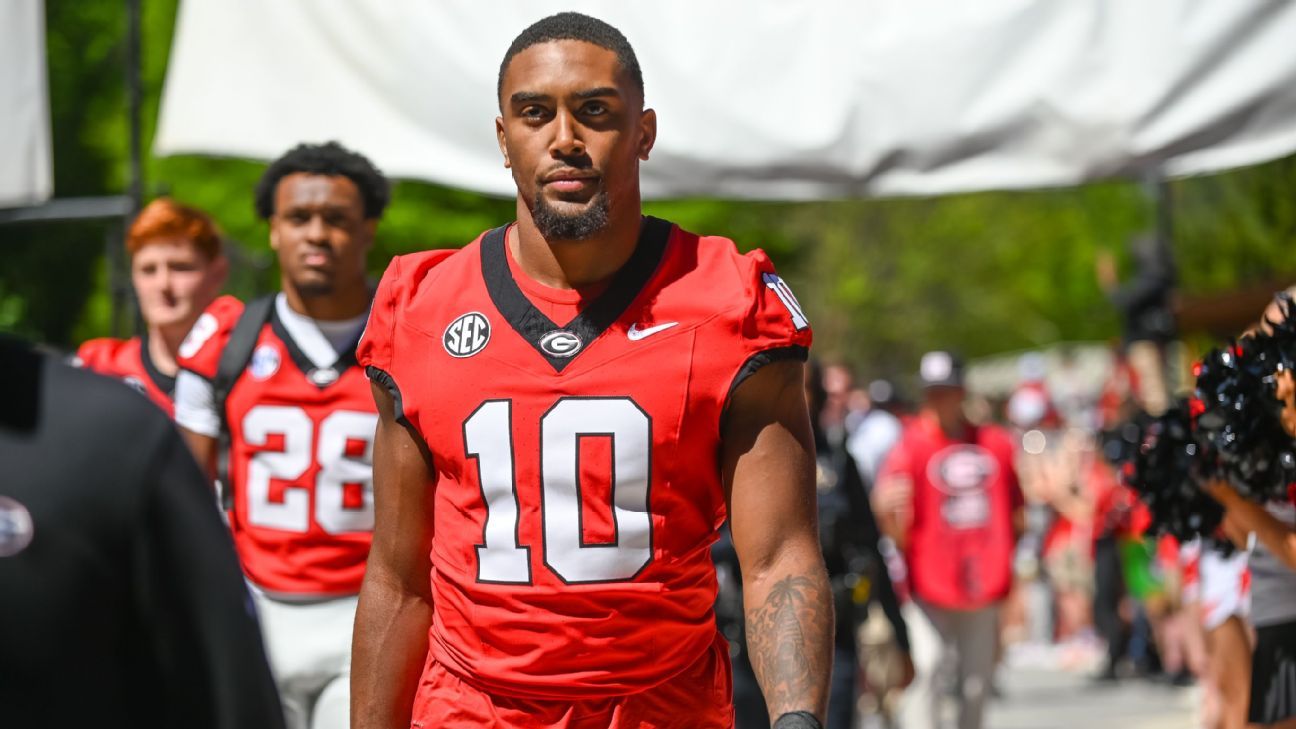
Georgia’s athletic department is headed to court to try to obtain $390,000 in damages from a former standout defensive end who transferred from the school after his sophomore season in a potentially precedent-setting case.
The Bulldogs have asked a judge to force former defensive end Damon Wilson, currently the top pass rusher on Missouri’s defensive line, to enter into arbitration to settle a clause in his former contract that serves effectively as a buyout fee for exiting his deal early. Wilson played for Georgia as a freshman and sophomore before transferring to Missouri in January, two weeks after signing a new deal with Georgia’s Classic City Collective.
Many schools and collectives have started to include “liquidated-damages” clauses in their contracts with athletes to protect their investment in players and deter transfers. Georgia is one of the first programs to publicly try to enforce the clause by filing suit against a player.
“When the University of Georgia Athletic Association enters binding agreements with student-athletes, we honor our commitments and expect student-athletes to do the same,” athletics spokesman Steven Drummond said in a statement to ESPN on Friday.
Multiple attempts to reach Wilson for comment through family members Friday were unsuccessful. Wilson was served last week in Missouri with a summons to appear in court, according to legal documents.
The Bulldogs paid Wilson a total of $30,000 from the disputed contract. Because of the way the deal was crafted, Georgia says Wilson owed it $390,000 in a lump sum within 30 days of his decision to leave the team. Drummond declined to comment when asked why the damages being sought are much higher than the amount Wilson was paid.
Wilson signed a term sheet with Classic City Collective in December 2024, shortly before Georgia lost in a quarterfinal playoff game to Notre Dame to end his sophomore season. The 14-month contract — which was attached to Georgia’s legal filing — was worth $500,000 to be distributed in monthly payments of $30,000 with two additional $40,000 bonus payments that would be paid shortly after the NCAA transfer portal windows closed.
The deal states that if Wilson withdrew from the Georgia team or entered the transfer portal he would owe the collective a lump-sum payment equal to the rest of the money he’d have received had he stayed for the length of the contract. (The two bonus payments apparently were not included in the damages calculation.) Classic City signed over the rights to those damages to Georgia’s athletic department July 1 when many schools took over player payments from their collectives.
Georgia’s filing claims Wilson received his first $30,000 payment Dec. 24, 2024. Less than two weeks later, he declared his plans to transfer.
Legal experts say Georgia’s attorneys will have to convince an arbitrator that $390,000 in damages is a reasonable assessment of the harm the athletic department suffered due to Wilson’s departure. Liquidated damages are not legally allowed to be used as punishment or primarily as an incentive to keep someone from breaking a contract.
In one of the only other examples of a school trying to enforce a similar clause, Arkansas’ NIL collective filed a complaint in the spring against quarterback Madden Iamaleava and wide receiver Dazmin James after both players transferred out of the program. It’s not clear if the Iamaleava case has been resolved. James’ attorney, Darren Heitner, told ESPN that the wide receiver “stood his ground” and that Arkansas has not moved forward to date with further attempts to collect damages.
“To me, [these clauses] are clearly penalty provisions masquerading as liquidated damages,” Heitner said.
Several attorneys who have reviewed athlete NIL contracts for ESPN in the past say they believe schools and their collectives are using liquidated-damages clauses in bad faith to punish players who break their contract early.
Schools and collectives have not used the negotiated buyout clauses that typically appear in coaching contracts for athletes because the teams aren’t technically paying them to play their sport. Instead, the school pays players for the right to use their name, image and likeness in promotional material. Paying for play could make it more likely that courts deem athletes to be employees, which almost all college sports leaders want to avoid.
Wilson’s case could help set a precedent on whether liquidated-damages clauses will serve as an effective, defensible substitute for more traditional buyout fees.
-

 Rec Sports2 weeks ago
Rec Sports2 weeks agoFirst Tee Winter Registration is open
-

 Rec Sports1 week ago
Rec Sports1 week agoFargo girl, 13, dies after collapsing during school basketball game – Grand Forks Herald
-

 Motorsports1 week ago
Motorsports1 week agoCPG Brands Like Allegra Are Betting on F1 for the First Time
-

 Sports2 weeks ago
Sports2 weeks agoVolleyball Recaps – November 18
-

 Motorsports2 weeks ago
Motorsports2 weeks agoF1 Las Vegas: Verstappen win, Norris and Piastri DQ tighten 2025 title fight
-

 Sports1 week ago
Sports1 week agoTwo Pro Volleyball Leagues Serve Up Plans for Minnesota Teams
-

 Sports1 week ago
Sports1 week agoUtah State Announces 2025-26 Indoor Track & Field Schedule
-

 Sports1 week ago
Sports1 week agoSycamores unveil 2026 track and field schedule
-

 Sports1 week ago
Sports1 week agoTexas volleyball vs Kentucky game score: Live SEC tournament updates
-

 NIL5 days ago
NIL5 days agoBowl Projections: ESPN predicts 12-team College Football Playoff bracket, full bowl slate after Week 14






















































